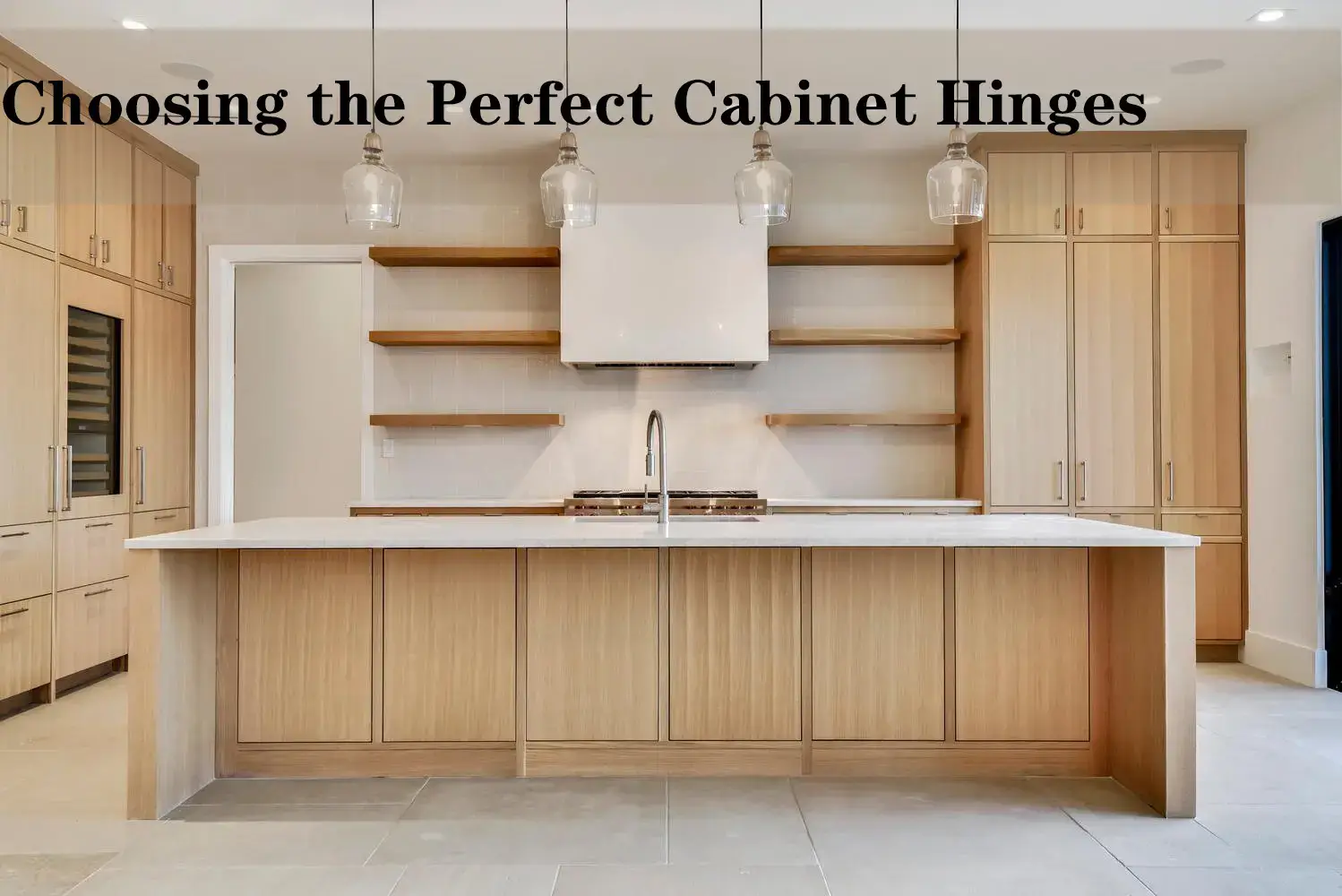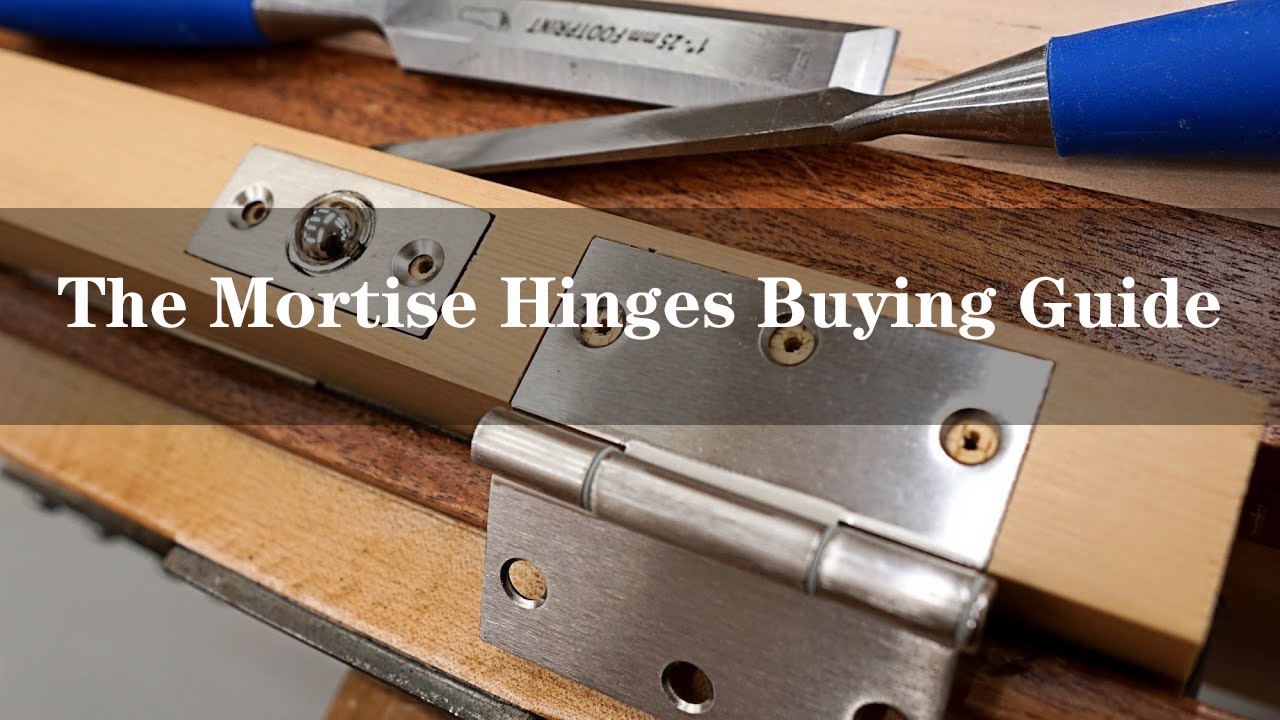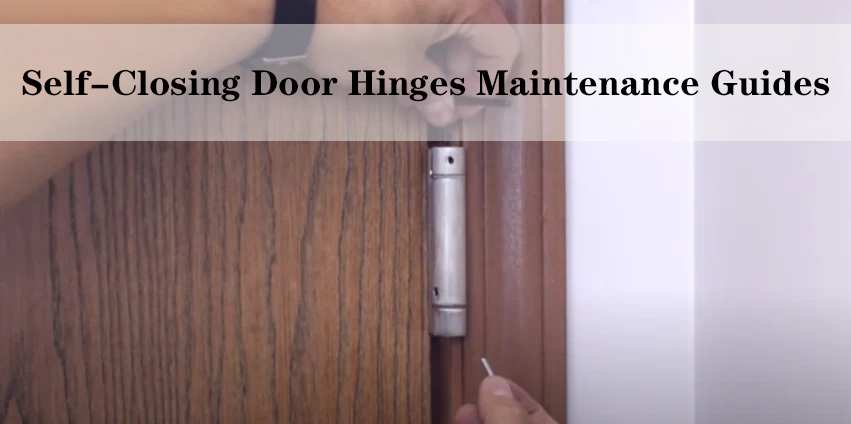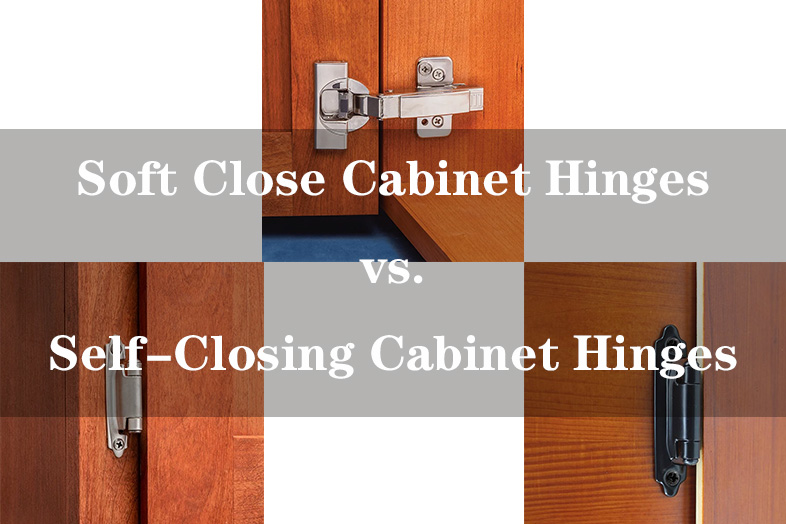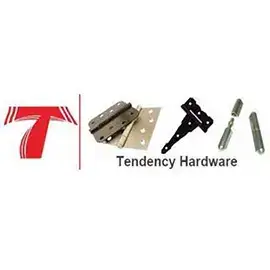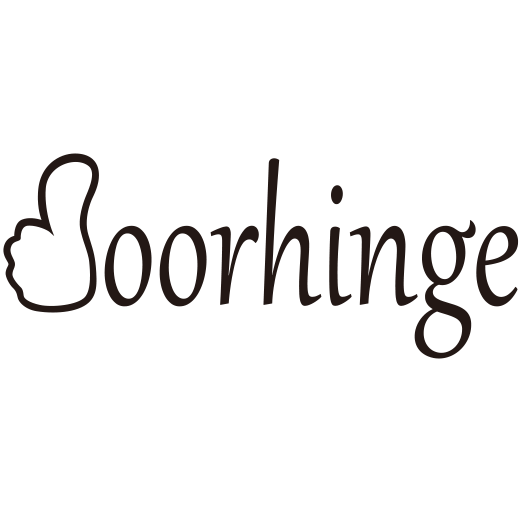Understanding the Basics of Cabinet Hinges

Understanding the basics of cabinet hinges is crucial when you’re looking to upgrade or install new cabinets. These little components might seem insignificant, but they play a critical role in the functionality and appearance of your cabinets. Here’s a breakdown of the fundamental aspects:
Types of Cabinet Hinges
1. Butt Hinges: These are the most traditional type of hinge, consisting of two rectangular metal plates joined by a pin. Commonly used for inset cabinet doors where the door sits flush with the cabinet frame.
2. Concealed Hinges: Also known as European hinges, they’re hidden when the cabinet door is closed, offering a clean, modern look. Ideal for contemporary designs and for those wanting a seamless appearance.
3. Overlay Hinges: These hinges are visible from the outside and work well for cabinets where the door partially or fully overlays the cabinet frame. Offered in different overlay sizes to accommodate various door sizes.
4. Continuous/Piano Hinges: Typically found on cabinet doors that extend the entire length of the cabinet. These hinges provide extra strength and stability.
Hinge Materials
Hinges come in various materials, each with its own set of characteristics:
Steel: Known for its strength and durability, often used for heavy-duty applications.
Brass: Provides an attractive appearance and is resistant to corrosion, making it a popular choice for many homes.
Zinc: A cost-effective option that offers decent durability.
Nickel: Offers a modern and sleek look while being resistant to tarnishing.
Factors to Consider When Choosing Cabinet Hinges

When considering cabinet hinges for your kitchen, bathroom, or any cabinet installations, several crucial factors should guide your decision-making process. Let’s delve deeper into these considerations:
1. Cabinet Door Type and Style
The type and style of your cabinet doors significantly influence the type of hinges you’ll need. The three primary types of cabinet doors include:
Inset Doors: These doors fit within the cabinet frame and require hinges that allow the door to sit flush with the frame when closed. Butt hinges are commonly used for this style.
Overlay Doors: These doors cover part of the cabinet frame when closed. The overlay amount (partial or full) affects the choice of overlay hinges required.
Frameless Doors: Common in modern designs, frameless cabinets require hinges that attach directly to the interior sides of the cabinet box.
2. Opening Angle and Clearance
Consider how wide you want the cabinet door to open. Some hinges offer a limited opening angle, which may affect accessibility to the cabinet’s contents or nearby objects. Ensure the chosen hinges provide adequate clearance without hindering other items in the room.
3. Weight and Size of the Door
Heavier or larger doors necessitate sturdier hinges capable of supporting the weight and size of the door without sagging or causing damage. Oversized doors may also require additional hinges for proper support.
4. Self-Closing Mechanism
If convenience and avoiding noise from slamming doors are priorities, opt for hinges equipped with a self-closing feature. These hinges gently close the cabinet door after a slight push, ensuring they shut securely without the need for manual intervention.

5. Aesthetic Considerations
Hinges come in various finishes and styles, from classic brass to sleek stainless steel or concealed hinges for a modern look. Consider the overall design scheme and hardware in your space to ensure the hinges complement the existing aesthetic.
6. Durability and Quality
Invest in high-quality hinges made from durable materials like stainless steel, brass, or nickel. These materials offer longevity, resisting corrosion and wear even with frequent use, ensuring your cabinets operate smoothly for years to come.
7. Ease of Installation and Adjustability
Consider the installation process; some hinges might require specific tools or expertise. Choose hinges that are adjustable, allowing for fine-tuning of door alignment, ensuring a perfect fit and smooth operation.
8. Cost and Budget
While quality hinges may come at a higher price, consider them as a long-term investment. Assess your budget against the durability, functionality, and aesthetic value offered by different hinge options.
9. Compatibility with Other Hardware
Ensure that the selected hinges align with other hardware elements in the room, such as drawer handles, pulls, or knobs. Coordinating finishes and styles can enhance the overall visual appeal of your space.
10. Expert Advice and Reviews
Consulting with hardware store experts or seeking advice from contractors, carpenters, or experienced individuals can provide valuable insights. Additionally, reading reviews and experiences shared by other users can help in making an informed decision.
Making an Informed Purchase

Making an informed purchase when it comes to cabinet hinges involves a strategic approach that considers various factors. Whether you’re renovating your kitchen, upgrading existing cabinets, or starting from scratch, choosing the right hinges significantly impacts functionality, durability, and aesthetics. Here’s a detailed guide on how to make an informed purchase:
1. Understanding Your Needs
Assess Your Cabinet Type: Different cabinets require different hinge types. Measure your cabinet doors and frames accurately to determine the style and size of hinges needed.
Consider Door Material: Solid wood doors might require heavier hinges compared to lighter materials like MDF or plywood.
Identify Functionality Requirements: Determine if you need features like soft-close hinges, extra-wide opening angles, or hinges suitable for specific cabinet designs.
2. Research and Education
Explore Hinge Types: Understand the various hinge types available—overlay, inset, concealed, continuous—and their applications. This knowledge helps match the hinge type to your cabinet door style.
Material Consideration: Learn about different hinge materials—steel, brass, zinc, nickel—and their pros and cons in terms of durability, corrosion resistance, and aesthetics.
3. Set a Budget
Consider allocating a budget for your hinge purchase. Higher-quality hinges might cost more initially but can offer better durability and longevity, reducing replacement frequency.
4. Quality Assurance
Check Quality Standards: Look for reputable brands or manufacturers known for producing high-quality hinges. Check for certifications or standards adhered to by the hinges.
Read Reviews: Utilize online platforms to read user reviews and feedback on specific hinge models or brands. Real-world experiences often provide valuable insights.
5. Compatibility and Adjustability
Ensure Compatibility: Verify that the selected hinges are compatible with your cabinet doors and frames. Some hinges have specific requirements regarding door thickness or style.
Adjustability: Consider hinges that offer adjustment features. This allows for fine-tuning door alignment, ensuring a perfect fit and smooth operation.
6. Seek Professional Advice
Consult Experts: If uncertain, seek advice from professionals at hardware stores or consult with carpenters, contractors, or interior designers. Their expertise can be invaluable in guiding your purchase.
7. Compare Options
Compare Specifications: Look at hinge specifications such as weight capacity, opening angle, and additional features. Compare these details among different hinge models to find the best fit.
Evaluate Finishes and Styles: Consider the aesthetic aspects. Look for finishes and styles that complement your cabinet design and other hardware in the room.

8. Warranty and Return Policies
Check Warranty: Ensure the hinges come with a warranty, indicating the manufacturer’s confidence in their product.
Review Return Policies: Understand the seller’s return policy in case the hinges are incompatible or faulty.
9. Make the Purchase
Once you’ve assessed all aspects and made comparisons, make the purchase from a reputable seller or retailer.
10. Installation Consideration
DIY vs. Professional Installation: Assess if you can install the hinges yourself or if it’s preferable to hire a professional for installation, especially for more complex hinge types.
Conclusion
Cabinet hinges might seem like minor components, but they play a crucial role in the functionality and aesthetics of your cabinets. Finding the perfect hinges involves a thoughtful assessment of factors like hinge type, materials, door style, and installation requirements. By understanding these nuances and considering your specific needs, you can confidently select the ideal cabinet hinges that not only elevate the functionality of your cabinets but also enhance the overall appeal of your living space.
Whether you’re upgrading existing cabinets or embarking on a new project, the journey to finding the perfect cabinet hinges becomes a rewarding endeavor when armed with the right information and considerations. So, take your time, explore options, and make a choice that aligns with both your practical requirements and aesthetic preferences. After all, the perfect hinge is not just a functional necessity; it’s a subtle detail that elevates the entire ambiance of your home.
